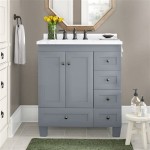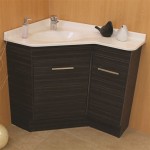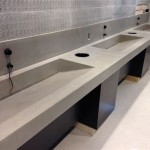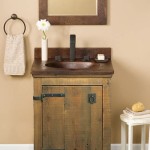Can Laminate Flooring Be Used in Bathrooms? Considerations and Best Practices
Laminate flooring has gained considerable popularity as a cost-effective and aesthetically versatile alternative to hardwood, tile, and other traditional flooring materials. Its ease of installation and wide range of available designs have expanded its application to various areas within the home. However, the suitability of laminate flooring for bathroom environments remains a frequent point of discussion due to the inherent moisture concerns associated with these spaces.
The primary objective of this article is to explore the feasibility of using laminate flooring in bathrooms, analyzing the factors that influence its performance and longevity. This analysis covers the composition of laminate flooring, the specific challenges presented by bathroom environments, and the strategies for selecting, installing, and maintaining laminate flooring to mitigate potential moisture-related problems. Understanding these aspects is crucial for making informed decisions and ensuring the successful implementation of laminate flooring in bathrooms.
Laminate flooring is a multi-layered synthetic flooring product designed to mimic the appearance of natural materials like wood, stone, or tile. The typical construction consists of four main layers fused together through a lamination process. The top layer, known as the wear layer, is a transparent, durable coating that protects the underlying design from scratches, stains, and fading. Beneath the wear layer is the decorative layer, a high-resolution photographic image that provides the flooring's visual appeal. The core layer, typically made of high-density fiberboard (HDF) or medium-density fiberboard (MDF), provides the structural integrity of the laminate plank. Finally, the backing layer provides stability and helps prevent moisture from seeping into the core.
While the wear layer offers protection against surface damage, and some laminate products incorporate moisture-resistant treatments, the core layer remains the most vulnerable component when exposed to excessive moisture. HDF and MDF are wood-based materials that can swell and warp when subjected to water penetration. This swelling and warping can lead to irreversible damage, compromising the integrity of the flooring and potentially leading to mold growth and other structural problems.
Understanding Bathroom Environmental Challenges
Bathrooms present a unique set of environmental challenges that differentiate them from other areas of the home. High humidity levels, frequent exposure to water splashes and spills, and potential leaks from plumbing fixtures create an environment conducive to moisture-related damage. These conditions necessitate a thorough understanding of the risks involved before considering the installation of any flooring material, including laminate.
Humidity is a persistent factor in bathrooms, generated by hot showers, baths, and the use of sinks. This elevated humidity can gradually penetrate the seams between laminate planks, potentially reaching the core layer and causing swelling. Furthermore, spills from sinks, tubs, and showers, if not addressed promptly, can exacerbate the problem by allowing water to seep into the flooring. Even minor leaks from toilets, faucets, or showerheads can lead to significant damage over time.
Adequate ventilation is crucial in mitigating the effects of humidity and moisture in bathrooms. Proper ventilation helps to remove moisture-laden air, preventing it from condensing on surfaces and seeping into flooring materials. Exhaust fans should be used during and after showers and baths to maintain a lower humidity level. Additionally, regular cleaning and maintenance practices, such as promptly wiping up spills and addressing leaks immediately, are essential for preventing moisture damage.
Selecting Moisture-Resistant Laminate Flooring
Choosing the right type of laminate flooring is paramount when considering its use in a bathroom. While no laminate flooring is entirely waterproof, certain products are specifically designed to offer enhanced moisture resistance. These products are often labeled as "water-resistant" or "waterproof" laminate, although it is important to understand the distinction between these terms.
Water-resistant laminate is designed to withstand limited exposure to water and moisture. These products typically feature a denser core and tighter seams, providing better protection against water penetration. However, prolonged exposure to standing water can still cause damage. Waterproof laminate, on the other hand, is designed to be completely impervious to water. These products often have a waterproof core material, such as plastic or composite, and tightly sealed seams to prevent any water from reaching the subfloor. Although more expensive, waterproof laminate offers a higher level of protection and is generally recommended for bathroom environments.
When selecting laminate flooring for a bathroom, it is also crucial to consider the AC (Abrasion Class) rating. The AC rating indicates the durability of the wear layer and its resistance to abrasion, impact, and staining. For bathrooms, a higher AC rating is recommended, as it will provide better protection against scratches and stains caused by frequent use and exposure to cleaning products.
In addition to the AC rating, consider the thickness of the laminate planks. Thicker planks tend to be more durable and offer better resistance to moisture penetration. They also provide a more solid and stable feel underfoot. Look for laminate flooring with a thickness of at least 12mm for optimal performance in a bathroom environment. Prior to purchasing, thoroughly inspect the laminate planks for any signs of damage or defects. Ensure that the tongue-and-groove system is intact and that the planks fit together tightly to minimize the risk of water penetration.
Proper Installation Techniques for Bathrooms
Even the most moisture-resistant laminate flooring can fail if not installed correctly. Proper installation techniques are crucial for creating a watertight and durable flooring surface in a bathroom. The most important aspect of installation is the preparation of the subfloor. The subfloor must be clean, level, and dry before installing any laminate flooring. Any imperfections or irregularities in the subfloor can create weak spots that are susceptible to moisture damage.
Before installing the laminate, apply a vapor barrier to the subfloor. A vapor barrier is a thin sheet of plastic or other waterproof material that prevents moisture from rising from the subfloor and damaging the laminate. Overlap the edges of the vapor barrier by at least 6 inches and tape them securely to create a continuous waterproof layer. Leave an expansion gap around the perimeter of the room and around any fixed objects, such as pipes or toilets. Laminate flooring expands and contracts with changes in temperature and humidity, and this expansion gap allows the flooring to move freely without buckling or warping.
When installing the laminate planks, ensure that the seams are tightly fitted together. Use a tapping block and hammer to gently tap the planks into place. Avoid using excessive force, as this can damage the tongue-and-groove system. Seal the perimeter of the room and around any fixed objects with a waterproof sealant. This sealant will prevent water from seeping under the flooring and damaging the subfloor. Pay particular attention to areas around toilets, showers, and tubs, as these are the most vulnerable to water damage.
After installation, allow the laminate flooring to acclimate to the bathroom environment for at least 48 hours before using the bathroom. This will allow the flooring to adjust to the temperature and humidity levels, minimizing the risk of expansion and contraction. Regularly inspect the flooring for any signs of water damage or leaks. Address any issues promptly to prevent further damage.
Finally, consider professional installation. While DIY installation is possible, improper installation can negate the benefits of even the most moisture-resistant laminate. Professional installers have the experience and expertise to ensure that the subfloor is properly prepared, the expansion gaps are correctly sized, and the seams are tightly sealed. While it represents an additional cost, professional installation can provide peace of mind and help to ensure the long-term performance of the laminate flooring in a challenging environment.

How To Install Waterproof Laminate Flooring Twenty Oak

Does Laminate Make The Best Bathroom Flooring Carpet Guys

Vinyl Planks In Bathrooms Residential Inspiration Flooring

What Is The Best Flooring For Bathrooms Tarkett

Best Bathroom Flooring

Can You Put Laminate Flooring In Bathrooms Dalton Center

How To Install Vinyl Plank Flooring In A Bathroom Fixthisbuildthat

Can You Use Engineered Wood Flooring In A Bathroom From The Forest Llc

2024 Bathroom Flooring Trends 20 Updated Styles Inc

Can You Install Laminate Flooring In Bathrooms Canadia
Related Posts







